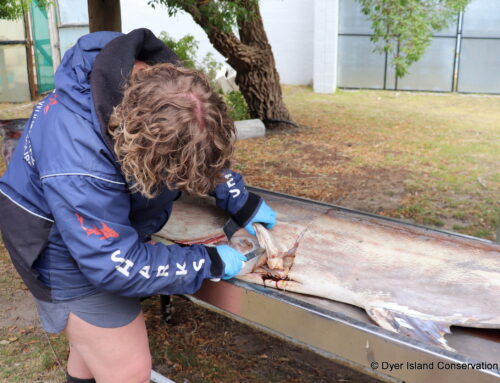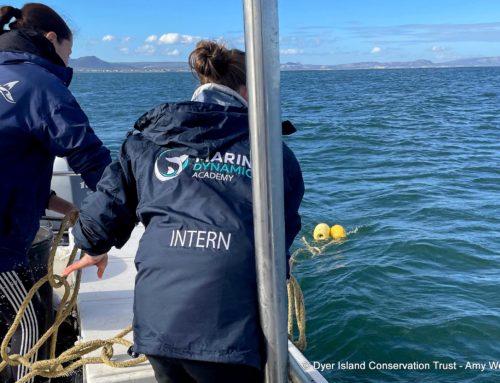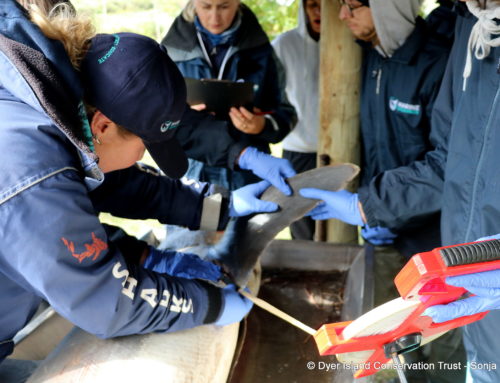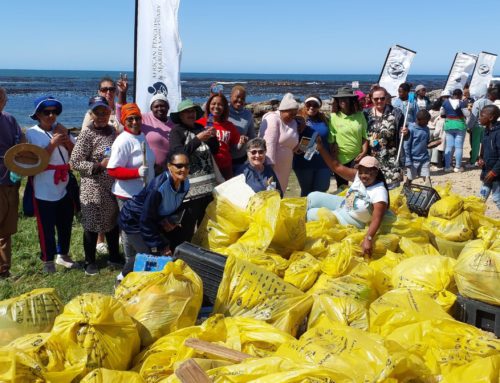STRANDED WHALE SHARK
December 23, 2010 by dyertrust
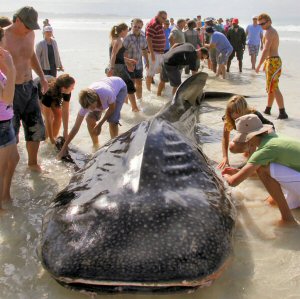
A 6.0-6.5 meter maleWhale sharkwashed ashore nearPearly Beach. Whale sharks do not normally occur in these waters because they prefer warm tropical waters such as Mozambique and Madagascar, not the frigid waters ofGansbaai!
Even though they have impressive jaws, their mouths are full of barely visible teeth. Whale sharks feed on planktonhence the name whale shark – and are not dangerous to humans (only krill!). We cannot say for certain how the shark ended up in our waters, but it could have something to do with the algae blooms we have been seeing the past week. Potentially, the shark may have been following these blooms into our area and got caught in the colder waters. Once there, it was only a matter of time before the shark was cooled below its tolerance level and wave action brought him to shore.
The shark showed many signs of life despite its physical appearance and wounds from being on the rough sand. Our team got the whale shark back into the water with the help of many locals and volunteers and two Landrovers. Once in the water, the whale shark maintained its orientation in the swells and seemed to show signs of improvement. We assembled our research vessel Lwazi and (with much difficulty in the breakers of Pearly Beach) attached the whale shark with ropes to Lwazi. They took the shark into deeper water and once there, the shark dove to the bottom. There have been no signs of the shark since. If only we had the resources available to place a satellite tag on the animal to track its movements and see what happens below the seas!
Thanks very much to Elrina Versveld of Pearly Beach Conservancy for informing us about the stranding!
Written by Michelle Wcisel
Whale shark update29 December 2010

Although the rescue attempt was ultimately unsuccessful, it is a good learning curve for the team and always worth a try.
Update by Brenda Walters

